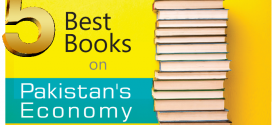Mr Shamshad suggests that “if our civilian rulers had been steadfast in their own commitment to constitutional supremacy, rule of law, independence of judiciary, separation of powers, and institutional integrity, no military dictator would have had dared a breach of his own constitutional oath”.
“Pakistan and World Affairs” is a book penned by Mr Shamshad Ahmad, a renowned civil servant who had served as Pakistan’s Foreign Secretary, and also held other key diplomatic assignments. It is an endeavour to look into the past and present issues of Pakistan as well as important topics of the world affairs.
The book indulges in finding the civilizational roots of the area that now forms Pakistan, and finds out the cultural richness of the Indus Valley Civilization it once cradled. Mr Shamshad states that this civilization had “a writing system, urban centres, and a diversified economic and social system.†Moving on to the complex interaction of Dravidians and Aryans, to the foundations of the Buddhist culture, to the cultural impact of the Gandhara Empire in the present-day northern Pakistan and eastern Afghanistan, to the Mauryan and the Gupta empires, the author reaches the critical point in history when the first Muslim conquerors arrived in the Subcontinent. They established a new socio-political order first in the northwestern India and then in the whole Subcontinent.
In a brief yet engaging narrative, Mr Shamshad familiarizes the reader with the important highlights of history like how Muslim Empire was established in this region of the world. In order to dispel the image of Mehmood Ghaznavi as a mere plunderer of Hindu wealth, Mr Shamshad stresses upon the fact that it was, in fact, Hindu Raja Jaipal who first attacked Ghaznavi and forced Mehmood, who was preparing to invade Central Asia, to turn his attention towards India. The delicacies of the balance of power during the Delhi Sultanate era culminated in the form of a strong centralized force, i.e. the Mughal Empire. In the words of Mr Shamshad, “The Mughal Empire was one of the largest centralized states in pre-modern history and was the precursor to the British Indian Empire.”
The contribution of the Mughal emperors to the administrative as well as cultural legacy of India is unparalleled in the history of the Subcontinent. However, the relatively peaceful tenures of the early Mughals were frequented by wars of succession. Mr Shamshad highlights that “inheritance of power and wealth in the Mughal Empire was not determined through primogeniture, but by princely sons competing to achieve military successes and consolidating their power at the court.”
The arrival of the British through East India Company and their tactics to gradually enhance their influence over the vast swathes of the Indian Subcontinent have been succinctly described along with the stories of those brave heroes who resisted the rise of the British on the political horizon of their motherland. Most historians, working on the Pakistan Movement, can be divided into two camps. First camp focuses on the socio-political consciousness of both Hindus and Muslims and views the formation of Pakistan in response to these revival and reform movements. The other group links the political manoeuvres of both All India Muslim League and Indian National Congress with the British promises and plans of constitutional reforms. Although Mr Shamshad does not go into much depth while analyzing this period of history, he creates a balance among the above referred two approaches to make things easy to comprehend. The political and constitutional turmoil of Pakistan has also been summarized in a chapter to provide the readers with the required background knowledge before turning to the task of weighing the problems that Pakistan faces today.
Commenting on the evolution of the democratic process and the role of military establishment in hampering this process, Mr Shamshad suggests that “if our civilian rulers had been steadfast in their own commitment to constitutional supremacy, rule of law, independence of judiciary, separation of powers, and institutional integrity, no military dictator would have had dared a breach of his own constitutional oath.”
Furthermore, he states in unequivocal terms that invariably it is the civil and military bureaucracy which controls our policies on crucial relations with China, India, US, the Gulf States, and the nuclear issue.
As the book enters into the arena of the contemporary issues, one can see the ease and the professional competence with which Mr Shamshad tackles these topics. The topics like Pakistan’s foreign policy, economy, civil-military relations, energy crisis, and terrorism are discussed with clarity along with the pragmatic solutions highlighted quite intelligently. The origin and role of UN has been examined with the excellence of a diplomat’s mind. Moreover, the issue of reforming UN Security Council has been given a thorough and deep analysis. The ambitious grab for power of the G4 (Brazil, Germany, India, and Japan) in their demand of permanent seats in the UNSC has been deconstructed and alternative paths of reforms have been clearly delineated including the strategy offered by UfC (Uniting for Consensus) based on the need to make UNSC more representative, more democratic, and more accountable. Pakistan’s official stance in this regard has not only been highlighted but brilliantly advocated by Mr Shamshad.
Globalization and its impacts have also been evaluated in detail. He explores the whole spectrum of advantages and disadvantages the world accrued as a result of following the neo-liberal agenda of deregulation and structural changes. The gap between the rich and the poor, i.e., the income inequality, has never been greater. Mr Shamshad summarizes the economic disparity in the following words: “The top 20 per cent of the world’s people, living in the richest countries account for 86 per cent of world’s GDP, 82 per cent of its export market, 68 per cent of all foreign direct investments (FDIs) and 74 per cent of all telephone lines.”
This book can prove to be quite useful for the students preparing for the competitive exams. It is a rare blend of National as well as International issues. In words of Mr Shamshad, “The story of Pakistan is one of remorseless tug and pull between the civilian and military rulers on the one hand, and the liberal and religious forces on the other hand.” One can frankly conclude that this serpentine path followed by the socio-political forces of Pakistan has been navigated well by Mr Shamshad for the intellectual curiosity and academic pursuits of his readers.
 Jahangir's World Times First Comprehensive Magazine for students/teachers of competitive exams and general readers as well.
Jahangir's World Times First Comprehensive Magazine for students/teachers of competitive exams and general readers as well.


